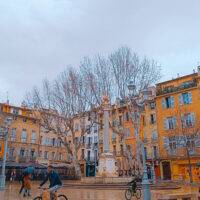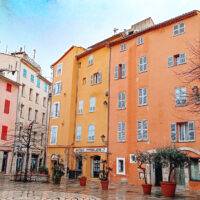Top Things to Do in the Loire Valley, France (Beyond the Famous Châteaux!)
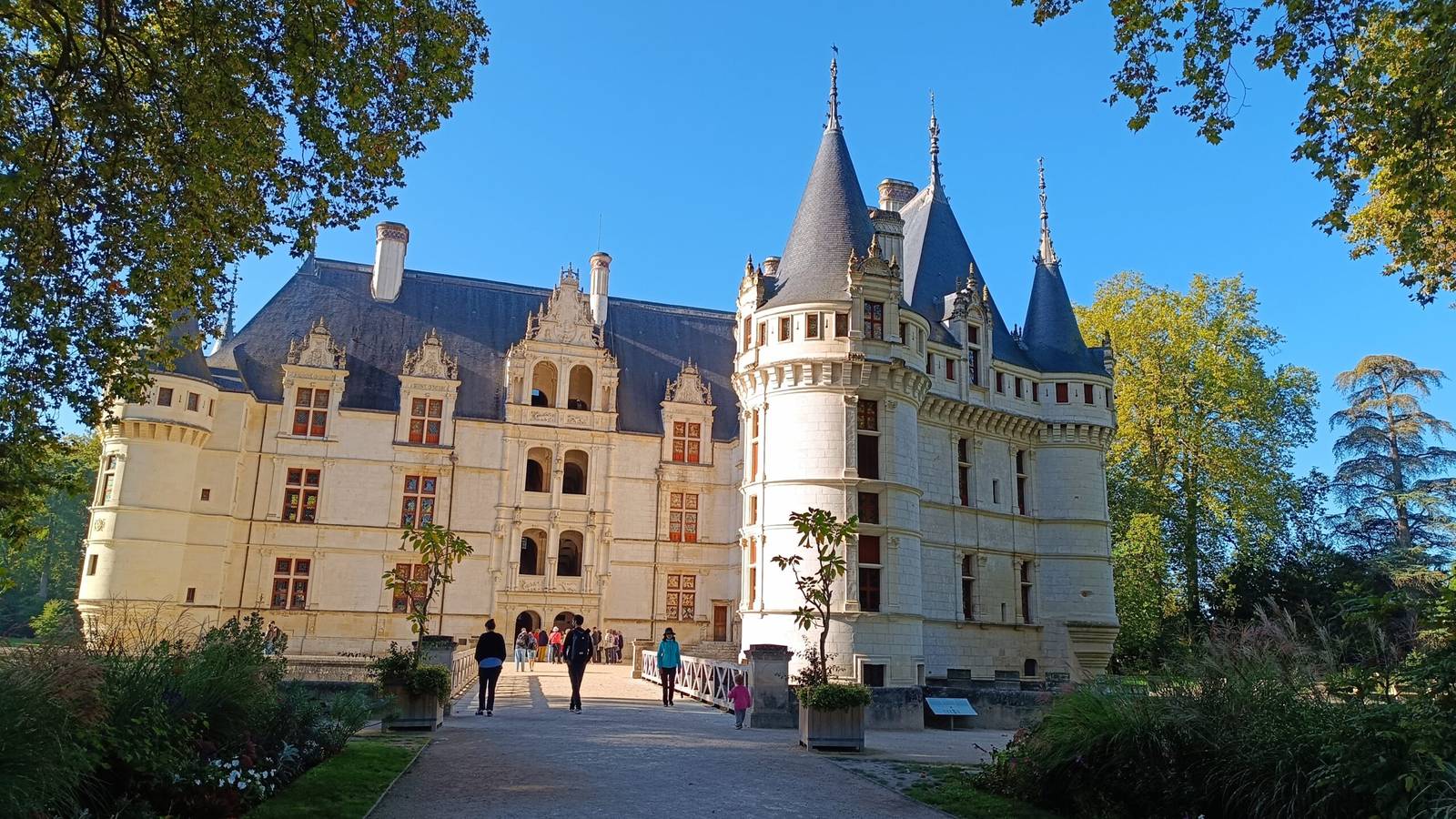
Disclaimer: This post may contain affiliate links, which means that if you click on any of those links and make a purchase, I’ll get a small commission, at no cost to you, to help support this website.
Last Updated on May 16, 2025
Welcome to the enchanting Loire Valley, a dreamy region in France known for its magnificent châteaux, rolling vineyards, and picturesque villages.
Whether you’re a history buff, wine enthusiast, or casual wanderer looking for a scenic getaway, the Loire Valley has something magical to offer. From the fairytale-like Château de Chenonceau to the medieval beauty of Chinon and the vibrant city of Tours, this UNESCO World Heritage site is brimming with treasures waiting to be explored.
I actually took two trips there to visit as there is so much to see and do (totaling 6 days). My advice would be to find some balance between seeing towns, villages, and castles, including at least a vineyard and a troglodyte site to your itinerary.
Get ready to dive into the best things to do, eat, and experience in the captivating Loire Valley!
Why Go to the Loire Valley
Known as the “Garden of France,” this stunning region is a paradise for history buffs, wine lovers, and anyone looking to immerse themselves in classic French beauty. Whether you’re admiring the grandeur of Château de Chambord, strolling through the elegant gardens of Château de Villandry, or sipping on world-class wines in quaint cellars, the Loire Valley promises an unforgettable experience.
How to Visit the Loire Valley
Visiting the Loire Valley is all about soaking in the beauty of its landscapes, castles, and charming villages. But how should you get around? Here’s a quick breakdown:
- Driving (Best Option): Renting a car gives you the most flexibility to explore the valley at your own pace. The castles and vineyards are often spread out, so having a car makes it much easier to hop from one gem to another. Plus, the scenic drives are a treat!
- Public Transport: Trains and buses connect major towns like Tours, Amboise, and Blois. However, reaching specific châteaux can be tricky without a car. Biking is also a popular and eco-friendly option along designated trails, especially the Loire à Vélo route.
- Guided Tours: If you’re short on time or prefer convenience, guided tours from Paris or major towns in the region are a fantastic way to see multiple castles in a day without the hassle of planning. Plus, you’ll get historical insights from knowledgeable guides.
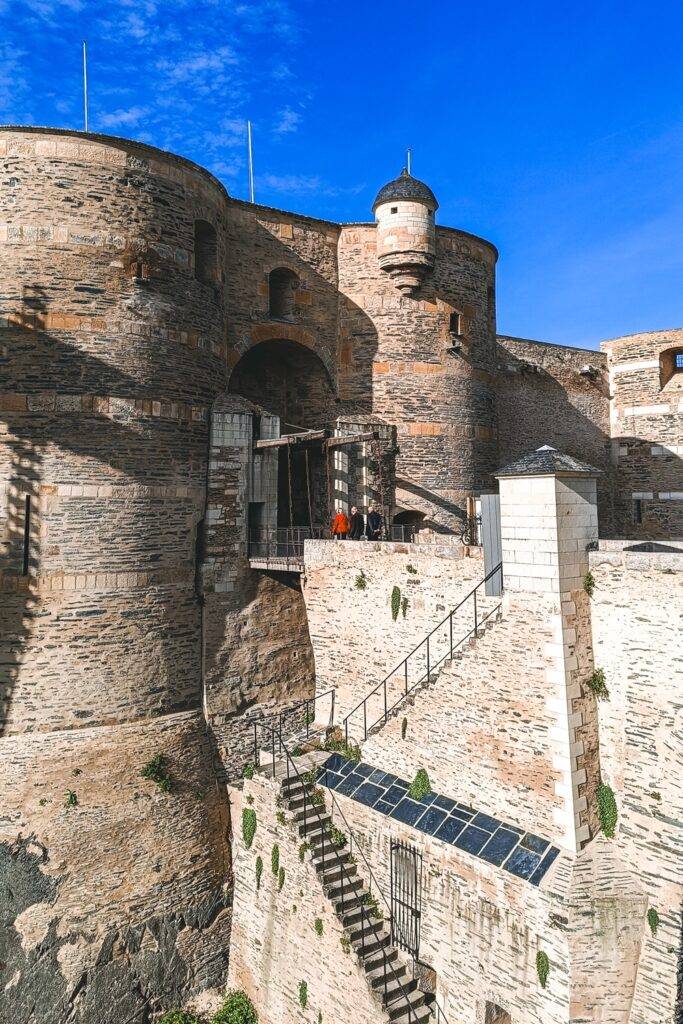


Best Time to Visit the Loire Valley
The Loire Valley is a treat year-round, but the best time to visit is from late spring to early autumn (May to September). During this period, the gardens are in full bloom, the vineyards are lush, and the weather is generally warm and pleasant.
- Spring (April to June): Ideal for mild temperatures, blooming gardens, and fewer tourists.
- Summer (July to August): Peak tourist season with lively festivals and gorgeous weather, but expect bigger crowds at popular châteaux.
- Autumn (September to October): Harvest season in the vineyards! The foliage turns golden, and the crowds thin out, making it a perfect time for wine lovers.
- Winter (November to March): A quieter and cozier experience. Some châteaux may have limited hours, but the lack of tourists means you can enjoy the fairytale vibes almost entirely to yourself.
How Many Days to Spend in the Loire Valley
To truly experience the Loire Valley’s magic, plan for at least 2 to 4 days.
- 2 Days: You can comfortably visit the main highlights, such as Château de Chambord, Château de Chenonceau, and the town of Amboise.
- 3–4 Days: Allows for a more relaxed pace, including charming villages, wine tastings, and additional châteaux like Château de Villandry and Château d’Azay-le-Rideau.
- 5+ Days: Ideal for the ultimate Loire Valley experience, diving deeper into its culinary scene, cycling trails, and hidden gems.
Short on time? Day trips from Paris are possible, but you’ll only be able to cover the top highlights.
Planning your itinerary is pretty easy as you can just follow the Loire River. Most sights are located between Orléans and Angers and are never far from the river.
Recommended Loire Valley Itinerary And Top Places to Visit
The Loire Valley is brimming with stunning castles, charming towns, and delightful vineyards. Here are the must-see spots from east to west so you can just visit them in that order, just skip a few if you’re short on time.
1. Visit Château de Chambord – Day 1

If there’s one château that screams “fairytale France,” it’s Château de Chambord. This absolute stunner is the largest château in the Loire Valley, and it’s as over-the-top as they come. Built by King François I in the 16th century as a hunting lodge (yes, really), it’s a jaw-dropping blend of French medieval tradition and Italian Renaissance style, complete with turrets, spires, and a famous double-helix staircase that some say was inspired by Leonardo da Vinci himself.
You could spend hours exploring the 440 rooms, 282 fireplaces, and 84 staircases, but don’t miss the rooftop terrace — the views over the chimneys, towers, and surrounding forest are magical. Speaking of which, Chambord is set in a massive park and nature reserve, so if you’ve got time, rent a bike or take a boat ride on the canal for a more relaxed perspective.
It gets busy, but it’s totally worth the hype — Chambord is one of those places that lives up to the photos and then some. Bring your camera, your curiosity, and a little sense of wonder.
2. Visit the Town of Blois – Day 1

Perched on the banks of the Loire River, Blois is a charming town that beautifully blends history, architecture, and that laid-back Loire Valley vibe. The star attraction is the Château de Blois, a fascinating patchwork of architectural styles that reflects centuries of royal drama—think secret staircases, Gothic halls, Renaissance balconies, and tales of intrigue involving kings and queens. But don’t just stop at the château! Wander through Blois’ old town with its steep lanes, half-timbered houses, and lovely squares.
The Maison de la Magie, just across from the château, adds a quirky twist to your visit—it’s dedicated to magician Jean-Eugène Robert-Houdin and features daily magic shows (great if you’re traveling with kids or just a kid at heart).
Cap it all off with a glass of local wine and finger foods at Le Patio or a stroll along the riverbanks at sunset. Blois makes a great base or stopover for exploring the eastern end of the Loire Valley, and it has just the right mix of history, culture, and relaxed charm.
3. Wander Through Amboise – Day 1


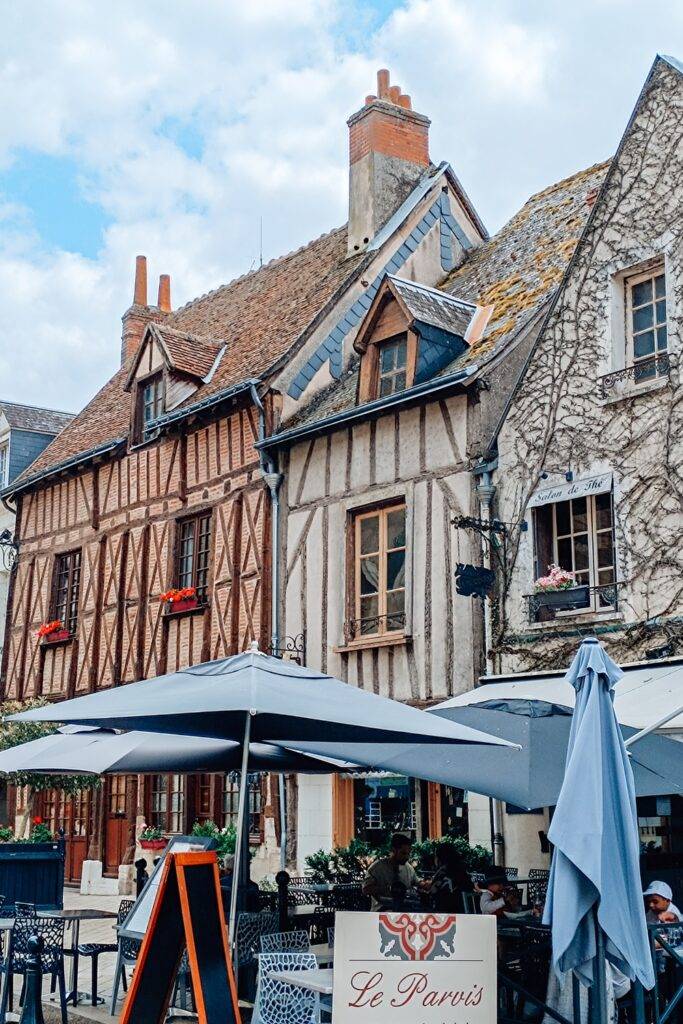
Amboise is one of those Loire Valley towns that hits the sweet spot — rich in history, incredibly walkable, and with serious riverside charm. At its heart is the Château Royal d’Amboise, perched dramatically above the Loire River. This was once a favorite residence of French kings, and when you wander through its royal chambers and terraces, it’s easy to see why. The views from the ramparts are chef’s kiss — you’ll feel like you’ve stepped into a painting.
Just a short walk away is Clos Lucé, the final home of Leonardo da Vinci. This charming manor house has been turned into a museum celebrating the artist-inventor’s genius, complete with models of his wildest machines and a peaceful garden dotted with full-scale inventions. It’s a must-see, whether you’re an art lover or just love a good dose of creativity.
Back in the town center, Amboise itself is adorable — cobbled streets, boutique shops, outdoor cafés, and a lovely Friday and Sunday market along the river. It’s got that perfect slow-travel vibe, making it a great place to linger for a day or two, especially if you want to mix château-hopping with good food and wine.
4. Explore Château de Chenonceau – Day 2

Arguably the most graceful and romantic of all the Loire châteaux, Château de Chenonceau is like something straight out of a fairytale — or a period drama. Spanning the River Cher on a series of elegant arches, this Renaissance masterpiece is known as the “Ladies’ Château” thanks to the powerful women who shaped its history, including Diane de Poitiers and Catherine de’ Medici. Their rivalry literally shaped the layout and design of the château and its stunning gardens.
Inside, the château is richly decorated with tapestries, period furniture, and fresh flower arrangements (yep, they still do those daily!). The long gallery over the river — once used as a ballroom — is one of the most iconic rooms in the Loire Valley. Standing there, with sunlight streaming through the arched windows and the water gliding below, it’s easy to understand why Chenonceau steals so many hearts.
The grounds are equally enchanting, with formal gardens, a tranquil woodland walk, and even a small maze. You can also rent a rowboat on the River Cher for a totally different (and totally Instagrammable) view of the château.
Whether you’re into royal drama, garden strolls, or just want to feel like you’ve stepped into a painting, Chenonceau is a must — romantic, regal, and ridiculously photogenic.
If you have extra time, you could include Montrésor, Chédigny, and Loches in your itinerary.
Montrésor is a picturesque medieval village nestled along the Indre River, famous for its beautiful Château de Montrésor, a fairytale-like castle that offers stunning views of the surrounding countryside and a glimpse into the region’s rich history.
France’s only “Village Remarquable” for its flowers, Chedigny is a floral paradise (visit in spring or summer to see the village in full bloom).
The medieval town of Loche boasts a stunning royal château, a fortified keep, and a beautiful Renaissance residence. Its winding streets are filled with character, and the views over the Indre River are just magical.
5. Explore the City of Tours – Day 2
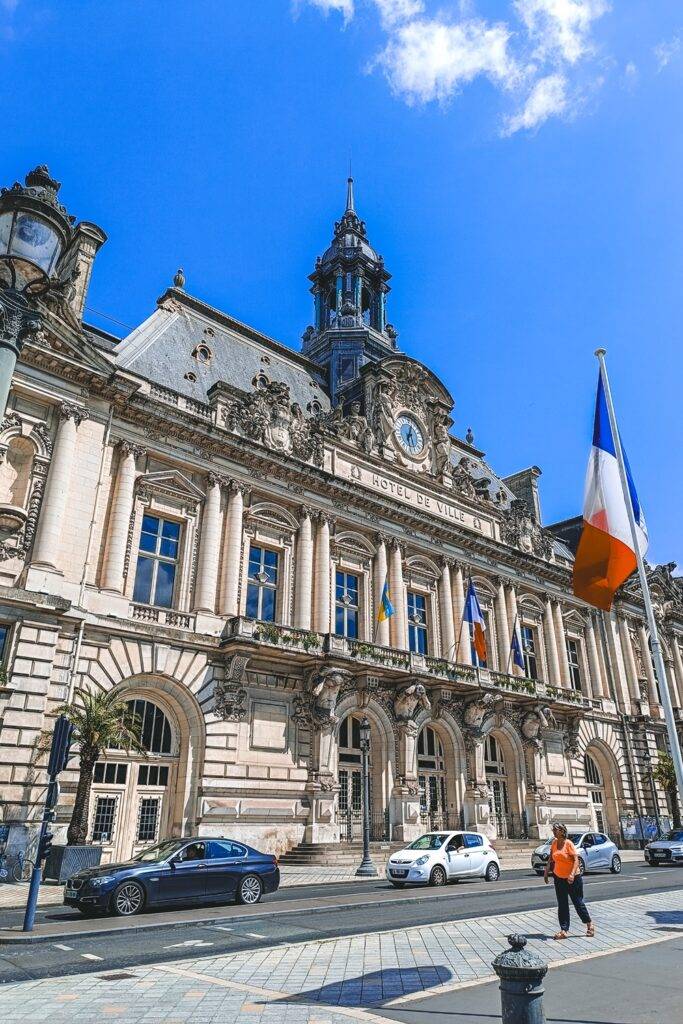
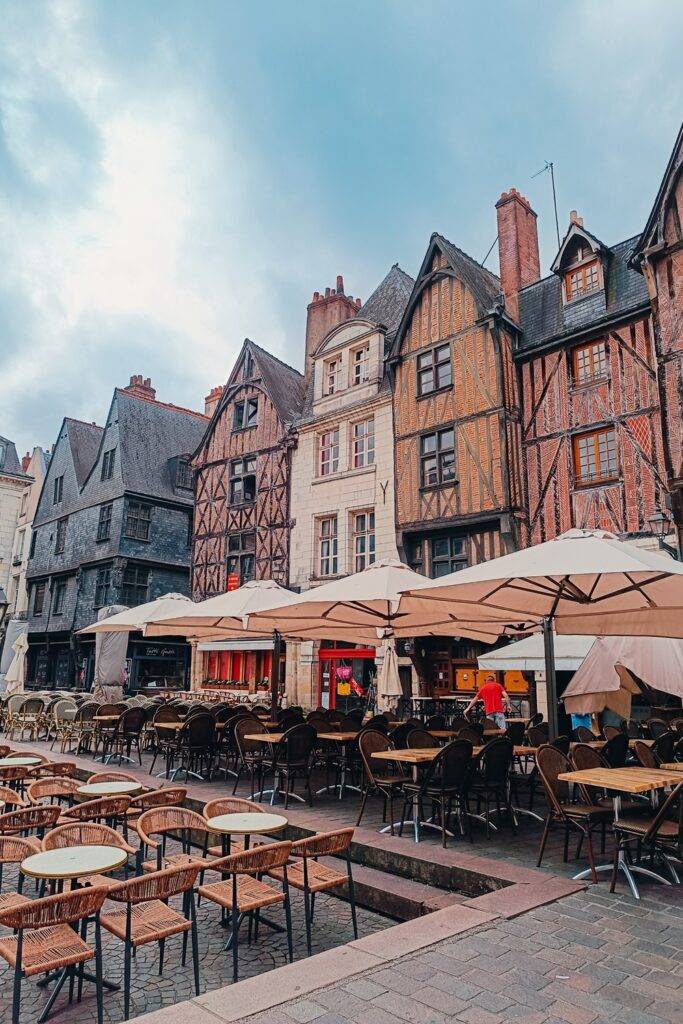
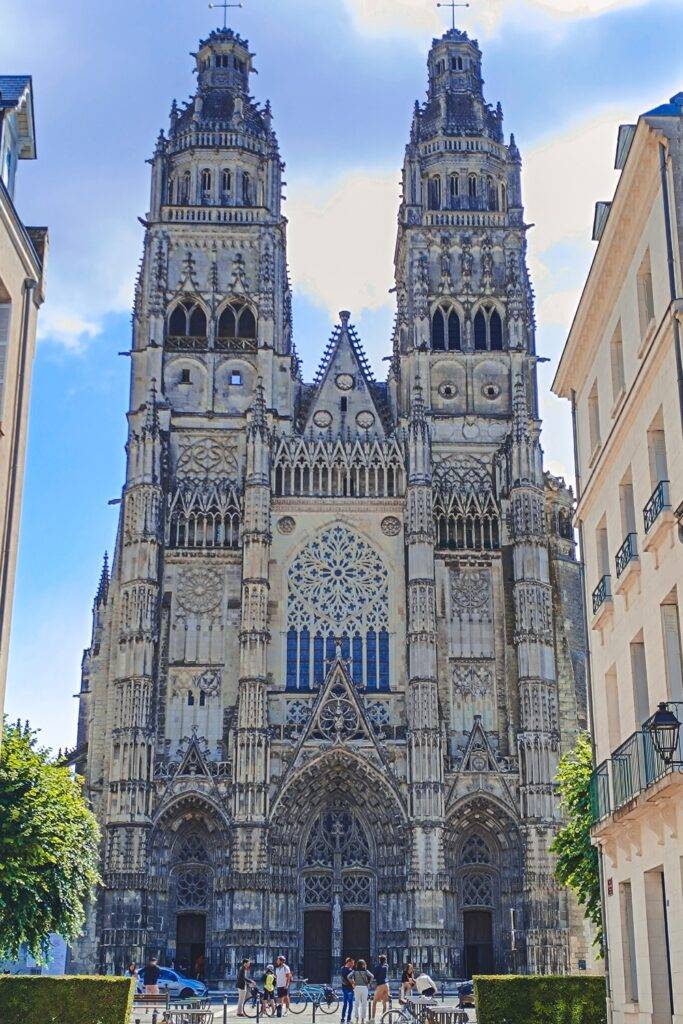
If you’re looking for a city in the Loire Valley with a bit more buzz, Tours is your spot. Often called the gateway to the châteaux, Tours is much more than a launching pad — it’s a vibrant university town with a charming old quarter, great food, and just enough edge to keep things interesting.
Start in the Old Town (Le Vieux Tours), where half-timbered houses and cobblestone streets set the scene. The Place Plumereau is the heart of it all — packed with café terraces perfect for people-watching over a glass of wine or a café crème. There’s always a lively energy here, day or night.
For something a little more cultural, check out the Saint-Gatien Cathedral with its gorgeous stained glass and Gothic flair, or the Musée des Beaux-Arts, which punches well above its weight in terms of art collections (plus, there’s a giant cedar tree and a sleeping lion statue out front — yes, really).
Tours is also a foodie favorite. The Les Halles market is a feast for the senses, brimming with local cheeses, charcuterie, and fresh produce — perfect if you’re planning a picnic by the river. And thanks to its central location, Tours makes a convenient and lively base for exploring nearby châteaux like Villandry, Azay-le-Rideau, and Chenonceau.
6. Stroll Through the Gardens of Château de Villandry – Day 3
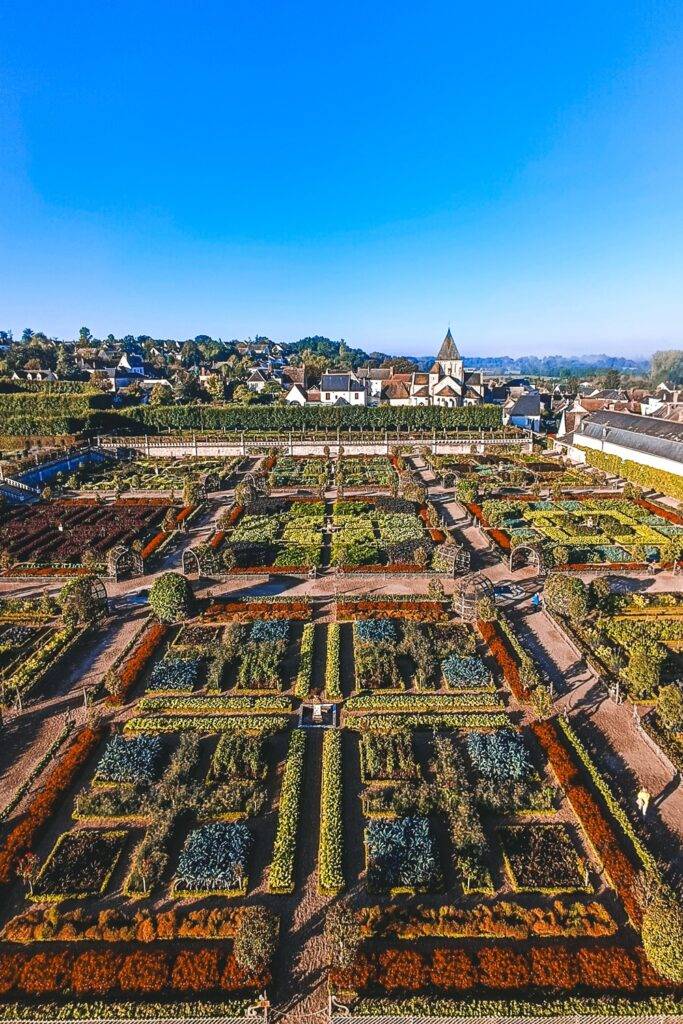
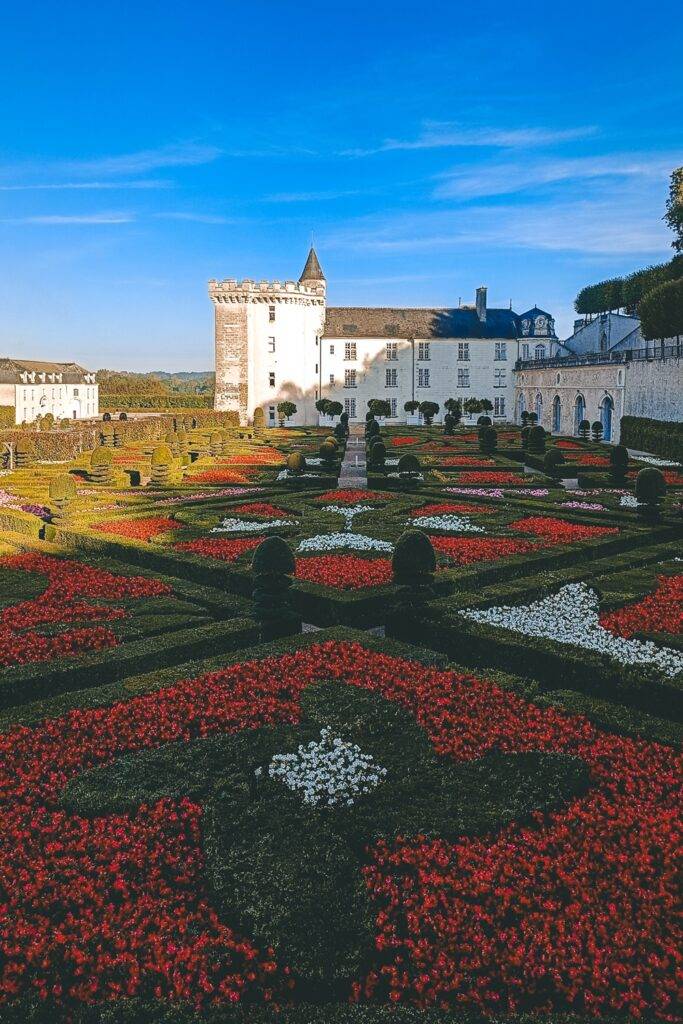

While the château itself is lovely — with its refined Renaissance architecture and elegant interiors — the real star of Château de Villandry is outside. This place is garden goals to the max. I’m talking six hectares of perfectly manicured, utterly mesmerizing gardens, each one themed, symmetrical, and photo-ready.
There’s the famous Ornamental Garden, where low box hedges are trimmed into intricate hearts, spirals, and fleur-de-lis patterns, each symbolizing different kinds of love (romantic, passionate, tragic — very French). The Kitchen Garden, meanwhile, looks like it’s straight out of a medieval painting, with rows of vegetables and herbs arranged in colorful geometric patterns. It’s both practical and ridiculously pretty.
As you wander through the Water Garden, Sun Garden, and peaceful woodland paths, you’ll find quiet spots to sit, breathe, and just take it all in. From the upper terraces, the views over the gardens are next-level — seriously, bring your camera or you’ll regret it.
Inside the château, you’ll find a warm, lived-in atmosphere, with rooms that reflect Villandry’s history as a family home (it still is!). It’s a bit less opulent than other Loire châteaux, but the vibe is elegant and welcoming — a perfect pairing with the magic outside.
7. Discover Château d’Azay-le-Rideau – Day 3
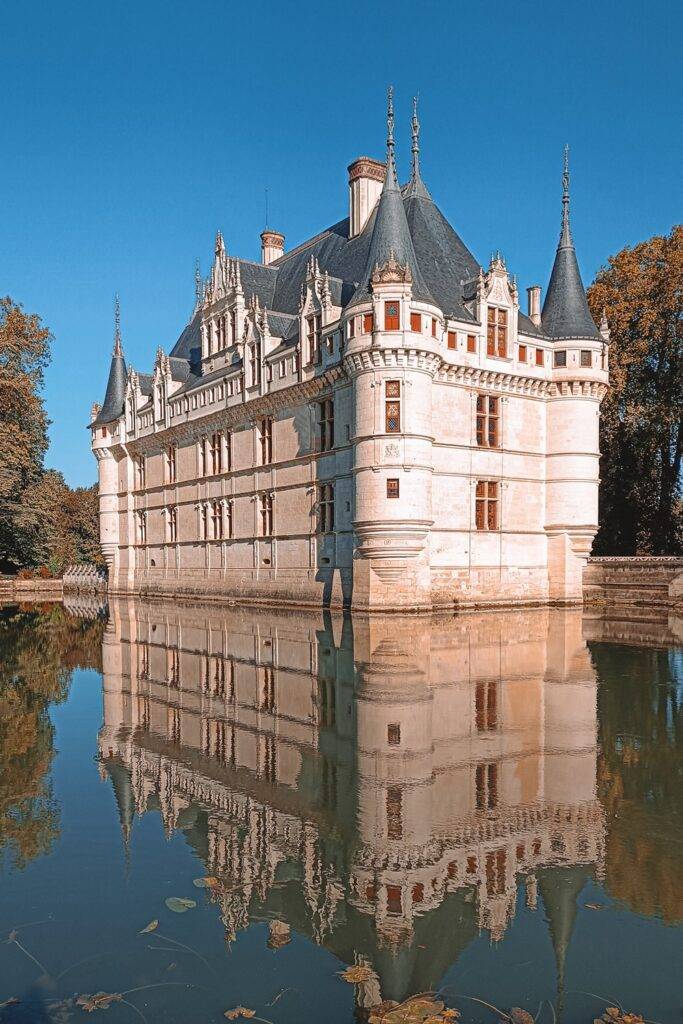

If you’re a sucker for storybook castles, Château d’Azay-le-Rideau is going to steal your heart. Built on an island in the middle of the Indre River, this elegant Renaissance château seems to float right on the water, with its reflection shimmering below like something out of a dream.
It’s not the biggest château in the Loire, but it’s easily one of the most beautiful — a perfect blend of French and Italian Renaissance styles, with pointed turrets, grand staircases, and delicate stonework. Inside, the rooms are beautifully restored with period furniture and portraits that make you feel like the 16th-century nobility might walk in at any moment.
But honestly, it’s the setting that really makes Azay-le-Rideau unforgettable. The peaceful riverside gardens are perfect for a stroll, and the mirrored reflection of the château in the water? Pure magic. If you’re lucky enough to visit in the golden late afternoon light, it’s practically cinematic.
The town of Azay-le-Rideau itself is also worth a wander. It’s small but charming, with little cafés, wine shops, and boutiques to explore. Grab a pastry, find a shady bench, and soak in the slow Loire Valley pace of life.
If you’re not in a rush, consider popping by the Musée Balzac, dedicated to the famous French novelist, located in the nearby Château de Saché. The museum showcases his life and work with a focus on his time in the region. Or, for a deeper dive into history, visit the Cave of Goupillières, an intriguing underground complex just outside of town, where you can explore prehistoric troglodyte dwellings and learn about ancient life in the Loire Valley.
8 – Château d’Ussé (The Sleeping Beauty Castle) – Day 3

Straight out of a fairy tale, Château d’Ussé is said to have inspired Charles Perrault’s Sleeping Beauty. This dreamy castle, with its spires and turrets, overlooks the Indre River and is surrounded by enchanting gardens designed by Le Nôtre.
Inside, you’ll find lavishly decorated rooms, intricate tapestries, and mannequins dressed in period costumes that bring history to life.
9. Explore Chinon – Day 3
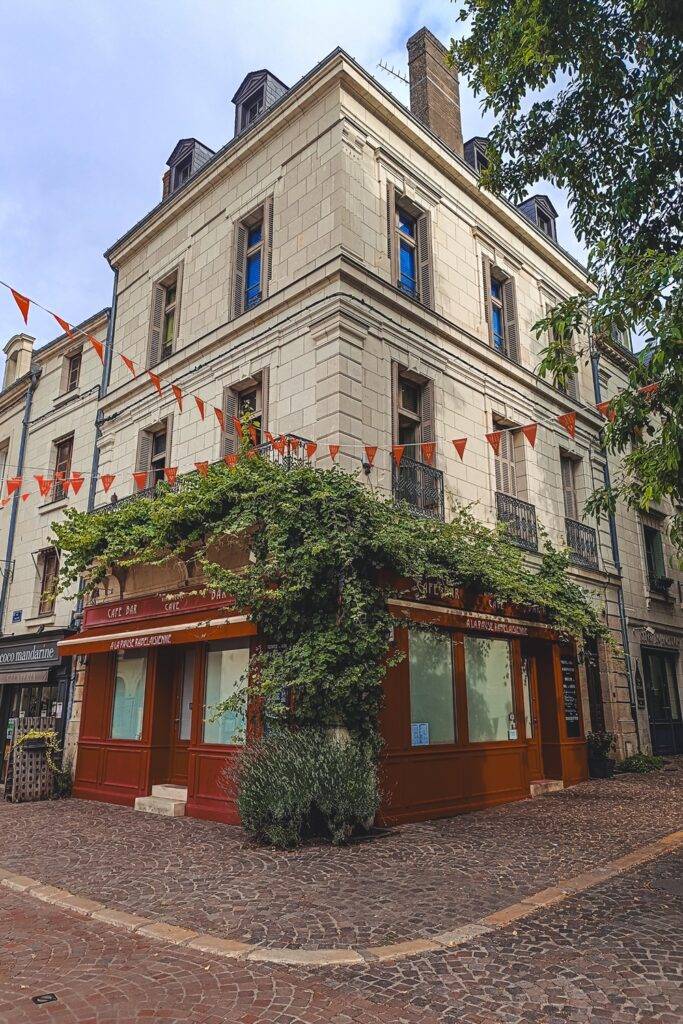

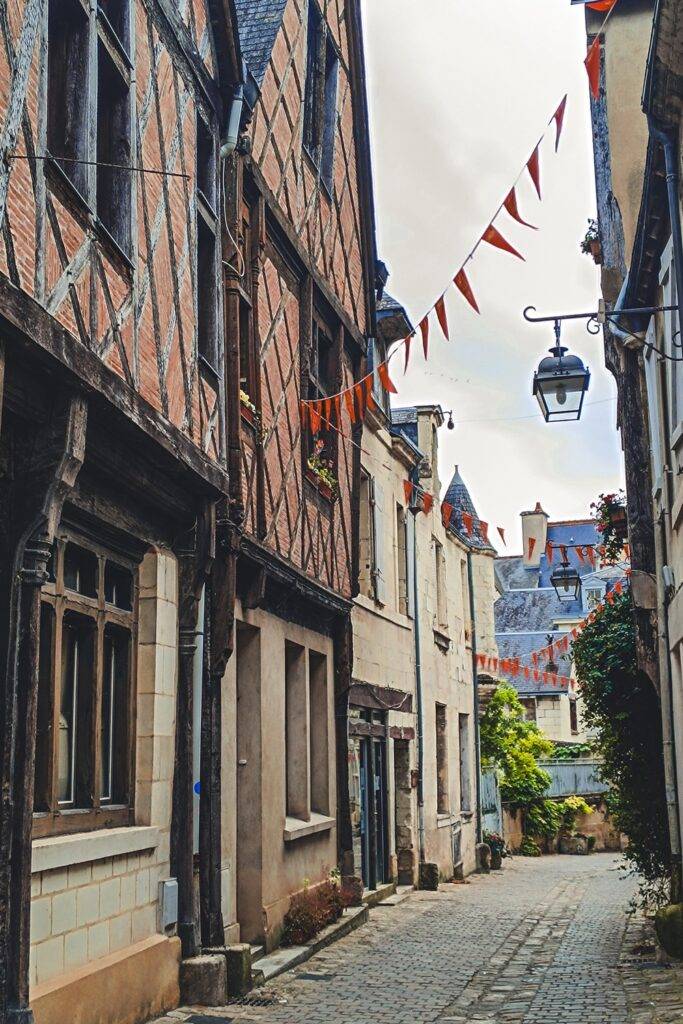
Nestled on the banks of the Vienne River, Chinon is one of the Loire Valley’s most historic and picturesque towns, steeped in medieval history and surrounded by vineyards.
At the heart of the town stands the imposing Château de Chinon, a fortress that was a key royal stronghold throughout the Middle Ages. The castle offers stunning views of the river and the surrounding landscape, with interactive exhibits that take you through its pivotal role in French history — including Joan of Arc’s visit to the town in 1429, where she famously met the future King Charles VII. The Fortress of Chinon itself is made up of various sections, including the King’s Keep, which is one of the best-preserved medieval towers in France.
Beyond the castle, Chinon’s old town is a charming maze of cobblestone streets, half-timbered houses, and flower-filled squares. A stroll through the historic center is like stepping into the past, with quaint cafés, artisanal shops, and lovely views of the surrounding hills.
For wine lovers, Chinon’s wine caves (cellars) are a must. Many of the local vineyards offer tours and tastings, where you can sample the delicious reds that have made this region famous.
10. Discover Fontevraud Abbey – Day 4



Located in the quiet town of Fontevraud-l’Abbaye, this historical gem is one of the most significant abbeys in France. Founded in the 12th century, it became the burial place of several prominent figures, including Henry II, Richard the Lionheart, and Eleanor of Aquitaine. Their tombs still rest in the abbey church, adding to the site’s royal legacy.
The abbey itself is a stunning blend of Romanesque and Gothic architecture, with impressive vaulted ceilings and peaceful cloisters. It’s also a vibrant cultural center, housing exhibitions and events that breathe new life into the historical space. The gardens offer a perfect spot to relax and enjoy the serene surroundings.
11. Explore Saumur – Day 4

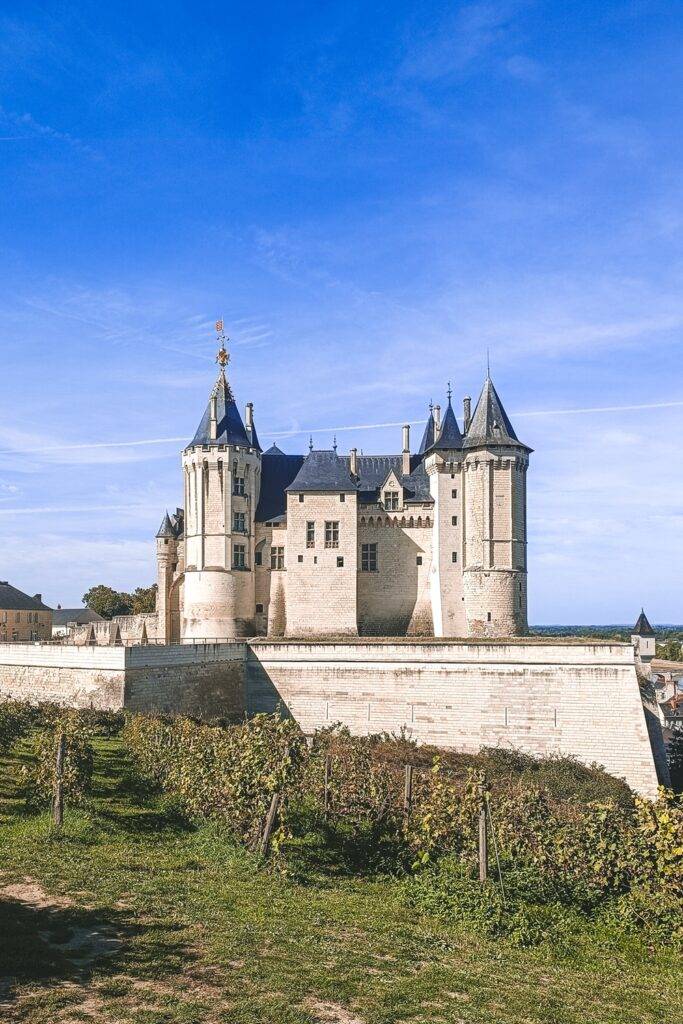

At the heart of the town sits the imposing Château de Saumur, a fairytale-like castle that overlooks the river and offers spectacular views of the surrounding area. The château has a fascinating history, originally built in the 10th century as a defensive fortress and later transformed into a royal residence.
Wine lovers will also find Saumur to be a treasure trove, as the town is surrounded by vineyards producing some of the Loire Valley’s best wines, particularly sparkling wines. Take a tour of the local caves, such as those at Domaine des Roches or Caves Ackerman, where you can sample delicious wines and learn about the centuries-old tradition of winemaking in the region.
If you’re looking to relax and explore the area, Saumur offers charming streets lined with cafés, restaurants, and boutiques. Stroll along the Place Saint-Pierre or the Rue de la Comédie for a taste of local life, or hop on a boat tour along the Loire River to enjoy the surrounding natural beauty from a different perspective.
If you have a bit more time, consider taking a detour to explore some charming nearby spots on your way to Saumur. Montsoreau, a lovely village on the banks of the Loire, is home to a beautiful château that’s worth a stop.
Just a short drive away, you can also visit Les Pommes Tapées du Val de Loire, where you can try the region’s delicious apple-based delicacies, a local treat that has been perfected for centuries.
For a truly unique experience, head to Souzay-Champigny, known for its troglodyte dwellings — these ancient cave homes are carved into the soft limestone cliffs and provide a fascinating glimpse into the region’s history and architecture.
12 – Angers (Art & History Hub) – Day 4
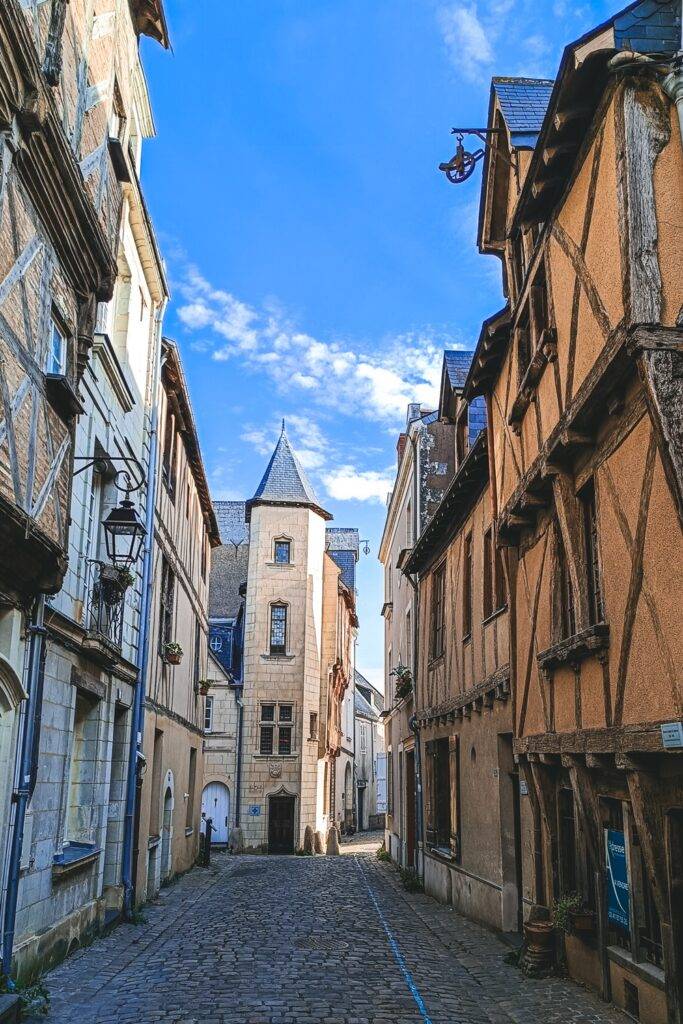

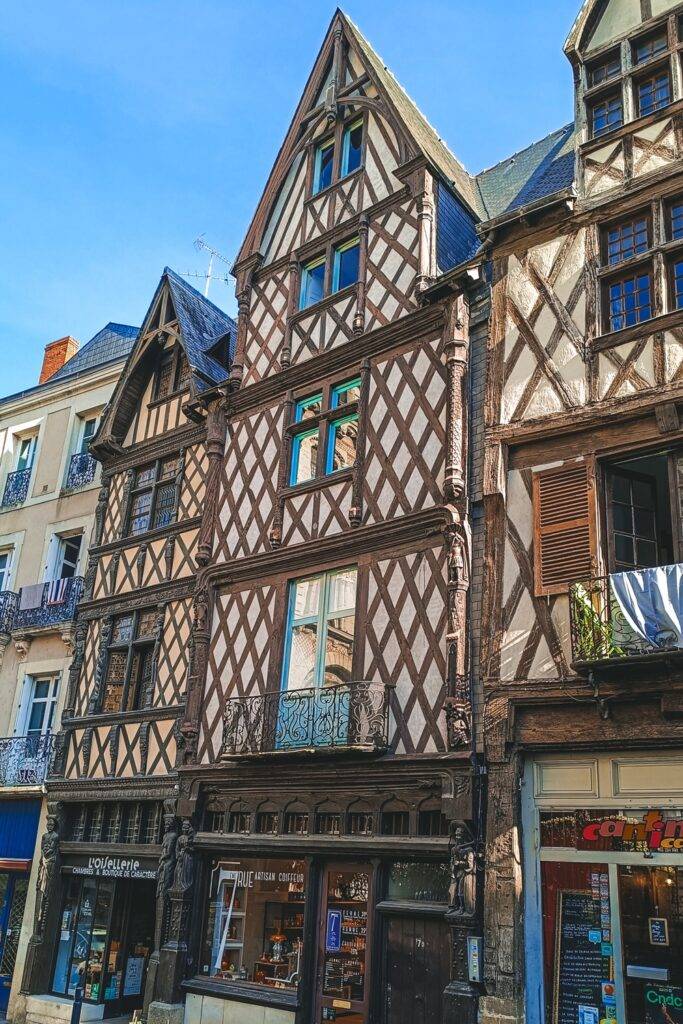
The centerpiece of Angers is undoubtedly the Château d’Angers, an imposing fortress dating back to the 9th century. The castle’s towering walls, drawbridge, and massive towers make it feel like something straight out of a fairy tale. Inside the château, you’ll find the famous Tapestry of the Apocalypse, a masterpiece of medieval art that depicts scenes from the Book of Revelation. It’s one of the largest and most well-preserved medieval tapestries in the world, and its intricate details are a must-see for art and history lovers.
Angers also has a thriving arts and culture scene, with a wealth of museums and galleries to explore. The Musée des Beaux-Arts offers a fantastic collection of European art, while the Musée Jean-Lurçat et de la Tapisserie Contemporaine showcases contemporary tapestry art. For a more modern cultural experience, head to the Le Quai cultural complex, which hosts various performances, concerts, and exhibitions throughout the year.
Food lovers will find plenty to enjoy in Angers as well. The city is renowned for its local specialties, such as Cointreau, a famous orange liqueur produced here, and Anjou wines, which can be sampled at local wine bars or vineyards. The Place du Ralliement and Place Sainte-Croix offer a wide variety of cafés and restaurants, where you can enjoy delicious regional dishes like rillettes, tarte Tatin, and fresh Loire Valley seafood.
From Saumur to Angers, you could drive along the Loire River or take a small detour to visit Les Perrières, once a quarry that you can now visit. They put a lot of effort into turning it into a light and sound museum where you can learn how the caves were carved across centuries. The troglodyte village of Rochemenier and its medieval cliff dwellings is also worth a detour.
Wine Tasting in the Loire Valley
The Loire Valley is one of France’s most diverse and exciting wine regions, and tasting your way through its vineyards is a must. You’ll find everything from crisp Sauvignon Blancs in Sancerre to elegant Chenin Blancs in Vouvray, and rich reds like Cabernet Franc in Chinon and Saumur.
Many local domaines open their doors to visitors, offering tastings in charming cellars, often with the winemakers themselves sharing their stories. Some great spots to check out include:
- Domaine Huet (Vouvray) – A legendary biodynamic estate producing top-tier Chenin Blancs.
- Château de Minière (Bourgueil) – A beautiful château with organic red wines and vineyard walks.
- Ackerman (Saumur) – For lovers of sparkling wine, this historic house offers tastings in atmospheric troglodyte caves.
- Caves Ambacia (Vouvray) – Set in a troglodyte cave, this vineyard offers a wonderful experience to taste wines from the Vouvray and Touraine regions.
- Caves M Plouzeau (Chinon) – Specializing in wines from the Chinon appellation, Caves M Plouzeau is perfect for lovers of Cabernet Franc.
If you’d rather stay in one spot and sample a variety of local wines without driving from château to château, there are some fantastic wine bars in the Loire Valley that specialize in showcasing the region’s best bottles. Here are a few great picks:
- Le Bistrot des Belles Caves (Tours)
Located in the heart of Tours, this cozy restaurant with a well-stocked wine bar is a gem for tasting local labels. The staff are super knowledgeable and happy to guide you through the region’s varietals.
- La Tonnelle (Saumur)
Right near the Saumur château, this intimate spot is run by passionate wine lovers who are all about Loire wines. You can even pick up a few bottles to take home after your tasting.
- Chez Bruno (Amboise)
A cozy wine bar offering a carefully curated selection of local Loire wines, perfect for a relaxing tasting experience. The knowledgeable staff will help you explore the region’s best wines, making it a great spot for both beginners and wine connoisseurs
- La Cave Voltaire (Chinon)
This unpretentious wine bar is tucked away near the medieval center of Chinon. It’s a favorite among locals and visiting wine geeks alike. The staff are happy to chat all things Cabernet Franc and let you taste your way through the best of the area.

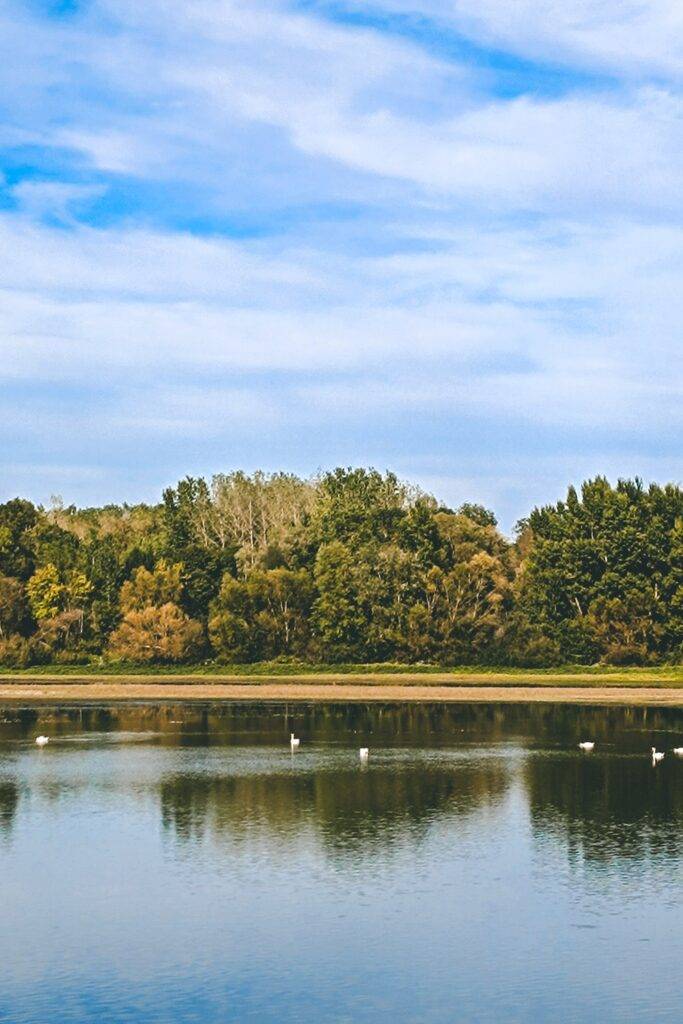
What to Eat in the Loire Valley (And Where to Find It!)
The Loire Valley’s culinary scene is all about hearty dishes, fresh produce, and divine wine pairings. Here’s what you shouldn’t miss:
Local Dishes to Try
- Rillettes: A deliciously rich spread made from slow-cooked pork, typically enjoyed on crusty bread.
- Tarte Tatin: This upside-down caramelized apple tart is a classic French dessert.
- Goat Cheese (Chavignol, Sainte-Maure-de-Touraine): The region produces some of the finest goat cheese in France, perfect with a glass of local Sancerre wine.
- Andouillette: A rustic sausage made from pork, often served with mustard sauce.
- Beuchelle Tourangelle: A rich dish of veal kidneys and sweetbreads in a creamy white wine sauce.
Sweets & Desserts
- Nougat de Tours: A delicious pastry filled with almond paste, candied fruits, and apricot jam.
- Macarons de Cormery: Soft, chewy almond-based cookies with a history dating back to the Middle Ages.
- Quernons d’Ardoise: Blue-colored chocolate pralines inspired by the slate roofs of Angers.
- Poires Tapées: Dried, flattened pears often rehydrated in wine or syrup.
Notable Restaurants to Check Out
- L’Evidence (Montbazon) – This Michelin-starred restaurant offers a refined dining experience with a menu featuring fresh, seasonal ingredients and a carefully curated wine list.
- Les Arpents (Amboise): A cozy spot offering excellent local wines and seasonal dishes.
- L’Auberge du Bon Laboureur (Chenonceaux): Classic French cuisine served in a charming inn-style setting.
- L’Auberge Pom’Poire (Azay-le-Rideau) – A Michelin-starred gem in Azay-le-Rideau, L’Auberge Pom’Poire offers a creative and seasonal menu, blending traditional French flavors with modern twists.
Where to Stay in the Loire Valley
From charming châteaux to cozy inns, the Loire Valley has accommodations for every style of traveler. Here are some top picks:
Charming Châteaux Stays
- Château de Pray (Amboise): Feel like royalty at this elegant château-turned-hotel with luxurious rooms, gorgeous gardens, and a Michelin-starred restaurant.
- Château des Arpentis (Amboise): A beautiful 12th-century château surrounded by peaceful grounds. The rooms are modern and spacious, perfect for a relaxing escape.
- Domaine de la Tortinière (Veigné, near Tours): This dreamy 19th-century château offers elegant rooms, a pool, and a lovely restaurant. It’s all about that classic Loire Valley charm!
Boutique Hotels & Cosy Inns
- Hotel Le Manoir les Minimes (Amboise): A charming manor house with views of the Château d’Amboise and the Loire River. Ideal for a romantic getaway. (closed for renovation until 2026)
- Le Grand Monarque (Azay-le-Rideau): A delightful family-run hotel with a rustic vibe, conveniently located near the Château d’Azay-le-Rideau.
- Les Hautes Roches (Rochecorbon): A unique, cliffside hotel offering stylish rooms carved into the rock, overlooking the Loire River.
Budget-Friendly Options & Hostels
- The People – Tours (Tours): A modern, centrally-located hostel offering clean dorms and private rooms, with a fun social atmosphere.
- Logis Hotel des Châteaux (Azay-le-Rideau): A comfortable and affordable hotel within walking distance of the castle.
- Hôtel Suzane (Angers): A well-rated and budget-friendly hotel located near the train station and the city center.
Final Thoughts
The Loire Valley is like a greatest-hits playlist of French culture, combining architectural wonders, delicious local cuisine, and some of the best wine-tasting experiences you can find. Whether you’re wandering through lush gardens, savoring a glass of Vouvray, or gazing up at the majestic spires of Château de Chambord, there’s a little something for everyone.
So pack your bags, charge your camera, and prepare to be charmed by one of France’s most enchanting regions. Bon voyage!
Save it on Pinterest for later:







